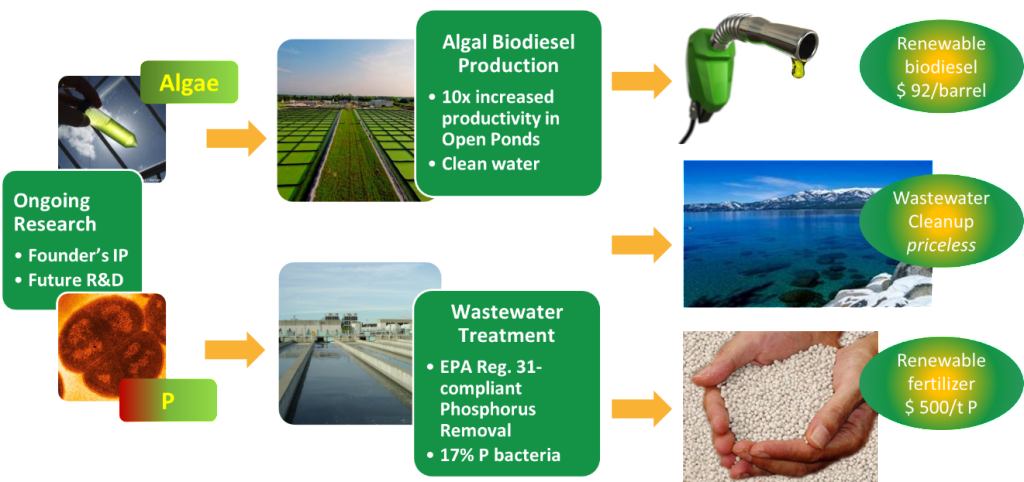PIARCS aims at commercializing two unrelated, yet complementary, disruptive technologies in the areas of bacterial phosphorus removal and algal biomass production. PIARCS’ founder, Alexandra Holland, PhD, chose the Public Benefit Corporation framework to deploy her IP in a way which best serves her lifelong sustainability aspirations:
An integrated vision for sustainability
Bacterial phosphorus removal (PIARCS IP area 1) in conjunction with algal biomass production (PIARCS IP area 2) provide three key solutions:
1) Clean water. Indeed, wastewater P:N is higher than algal biomass P:N, such that complete N utilization by algae would nevertheless yield P-rich wastewater, leading to ecosystems pollution. Bacterial phosphorus removal in conjunction with algal biomass production allows for the production of a nutrients-free oligotrophic effluent, namely clean water.
2) Biofuel. Algal biomass can be processed into biofuel and renewable precursors for the chemical industry.
3) Phosphorus fertilizer. The phosphorus-rich bacteria can be recovered to produce organic phosphorus fertilizer.
PIARCS primarily conducts R&D and generates revenue through licensing its IP
Low-cost licensing of its IP to end-users only
Improving technical resources for licensees at no additional cost
Strategic partnerships with manufacturers
A cooperative strategy highlighting complementary technologies in the Cleantech industry
Funding Public Benefit projects (education, environmental cleanup …)

